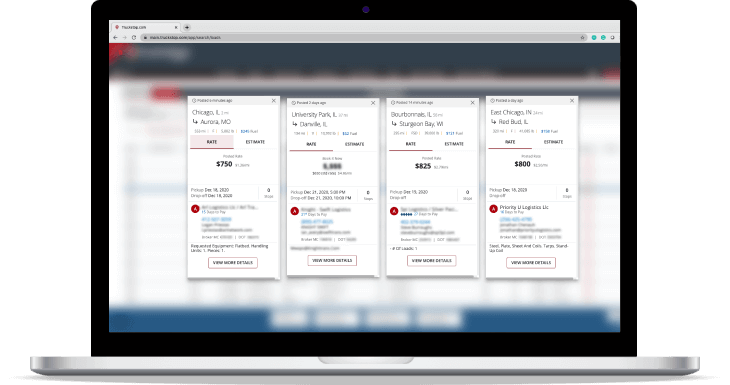Practical Mileage Pay: What It Is and How to Calculate It

Truck driver pay is one of the biggest components of pricing a load, and it’s often largely based on miles. But miles can be calculated in several ways, including practical miles, actual miles, and shortest miles.
You’ll get paid differently depending on which calculation brokers and shippers use, so you need to know the difference and what it means for your payday.
Practical miles are the best routes for big trucks to take. Practical miles are different from shortest-distance miles, which can often route trucks through small communities and less truck-friendly roads.
What does practical miles mean? Practical miles are the most efficient overall route. While they might technically cover a greater distance, practical miles often take less time by using interstate highways and avoiding small towns and stoplights.
What is practical mileage pay?
With practical mileage pay, drivers are paid based on the distance between the origin and destination using known routes that are most efficient for a given truck and load. Drivers accepting practical mileage for a load might choose to take a different route, but their pay will be based on the negotiated rate.
Practical miles vs actual miles vs shortest miles
Rates for the same load can be different depending on whether you’re using actual miles, shortest miles, or practical miles.
Actual miles
Actual miles are the exact miles driven to deliver a shipment. You might also hear actual miles referred to as “hub miles” by some industry veterans. Hub refers to the hubodometer, which used to be installed on the truck’s axle. These devices were more accurate than the vehicle’s odometer, which was not considered reliable.
Miles in modern trucks are stored in the tractor’s engine control monitoring (ECM) system and often transmitted wirelessly.
Shortest miles
Shortest miles are also called short miles or household good miles (HHG). They are simply the shortest route between the start and endpoints for a shipment and might cover less miles than actual or practical miles. The calculation for shortest miles does not factor in the most efficient or fastest route for a load. Instead, it represents the least possible drivable miles between two points regardless of congestion, infrastructure, or speed.
Practical miles
Practical miles are the best and shortest practical route for the truck and driver. Calculated based on the most efficient routing for drivers, practical miles will almost always show more miles than the shortest route. For example, practical miles prioritize interstate highways over secondary highways or toll routes.
What is the average rate per mile?

Freight rates for truckloads can fluctuate daily depending on demand, availability, and routes. The type of equipment, loads, and number of drops also play a role in determining the average rate per mile, as does the calculation method.
The industry average rate per mile typically varies between $1.50 and $2.50 per mile, although you will find exceptions outside those ranges.
In January 2021, for example, the national average rate per mile broke down this way:
- Vans: $1.97 mile
- Reefer: $2.35 per mile
- Flatbed: $2.17 per mile
When calculating the cost per mile, it can help to know the operator cost. According to the most recent analysis from the American Transportation Research Institute, the average cost to an operator to run a truck is $1.82 a mile. That figure takes into account driver wages, tires, licenses, insurance, and maintenance.
How to calculate practical miles
Newer software tools allow users to calculate practical miles using the exact street address for both the origination and destination. Others will calculate practical miles using the distance from the closest U.S. Post Office ZIP code to the starting point or destination. In this case, the post office becomes the default starting and ending locations.
Use a load board to find the best carrier rates.

To find the best carrier rates, work with tools and load boards like the ones on Truckstop.
The Truckstop Carrier Load Board has thousands of quality loads from trusted brokers to give you the best opportunities. You can compare rates and routes for available loads or multi-trip searches to help you plan routes in advance and maximize your earnings.
You can also search for brokers with great reputations and high credit ratings to make sure you get paid promptly. With brokers you trust, you can book a load in just a few clicks and get a rate confirmation within seconds.
Request a demo today and let us show you why Truckstop is the most trusted load board for carriers and trucking companies.
Topics:

Find out how our platform gives you the visibility you need to get more done.
Get helpful content delivered to your inbox.
Schedule a demo.
Find out how our platform gives you the visibility you need to get more done.





